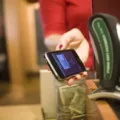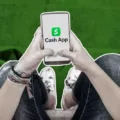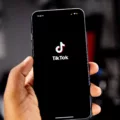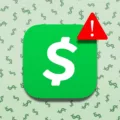Cash App has gained immense popularity as a convenient mobile payment service that allows users to send and receive money with ease. One common concern among users is how these transactions appear on their bank statements. In this article, we will explore how Cash App transactions are displayed on your bank statement and address any related queries you might have.
When you make a transaction using Cash App, whether it’s sending money to a friend or receiving a payment, the details of that transaction will be visible on your bank statement. This is because Cash App operates through two FDIC-insured bank partners, namely Sutton Bank and Lincoln Savings Bank. These banks help facilitate the financial services provided by Cash App, ensuring the security and reliability of your transactions.
It’s important to note that Cash App values privacy and does not share your transaction details with third parties or make them public for other users to see. Therefore, your transaction history on Cash App is not accessible to anyone apart from yourself. The only place where these transactions will be visible is on your external bank statement.
To access your bank statement and view your Cash App transactions, you will need to log in to your online banking portal or check your paper bank statement. Once you have access to your bank statement, you will be able to see the amount of each Cash App transaction, as well as the specific details such as the recipient’s name or username.
If you have any questions or concerns about the transactions displayed on your bank statement, it is advisable to reach out to your bank directly. They will be able to provide you with more information and address any queries you may have. Remember, your bank statement is a reliable source of information regarding your Cash App transactions, as it reflects the actual movement of funds between your bank account and Cash App.
Cash App transactions will be visible on your bank statement, as they are facilitated through FDIC-insured bank partners. However, your transaction history on Cash App is private and cannot be accessed or viewed by other users. If you have any questions or need clarification regarding your Cash App transactions, it is best to contact your bank for accurate and detailed information.
Remember, your bank statement is a valuable resource for tracking your financial activity, and it is always recommended to review it regularly to ensure accuracy and keep track of your transactions.

Do Cash App Transactions Show Up on Your Bank Statement?
Cash App transactions do show up on your bank statement if the transaction is funded to or by your bank account. This means that any money you send or receive through Cash App that is linked to your bank account will be visible on your external bank statement.
It is important to note that the specific details of the Cash App transaction, such as the recipient’s name or the purpose of the transaction, may not be explicitly mentioned on your bank statement. Instead, you will typically see a reference to Cash App or a similar identifier, along with the amount of money involved in the transaction.
To get more information about a specific Cash App transaction on your bank statement, such as the recipient’s details or the purpose of the transaction, it is recommended to contact your bank directly. They will be able to provide you with more specific information about the transaction in question.
Cash App transactions funded to or by your bank account will be visible on your bank statement, typically with a reference to Cash App and the amount of money involved. For more detailed information about a specific transaction, it is advisable to reach out to your bank.
What Bank Does Cash App Show Up As?
Cash App shows up as either Sutton Bank or Lincoln Savings Bank on bank statements. Cash App uses these two banks as its partners to provide its financial services, including direct deposit and bill pay. When users make transactions through Cash App, the transaction will typically appear on their bank statement with the name of either Sutton Bank or Lincoln Savings Bank, depending on which partner bank was involved in the transaction.
Here are some key points about Cash App and its partner banks:
– Cash App is a mobile payment service that offers various financial services, including direct deposit, bill pay, and Bitcoin trading.
– Cash App uses Sutton Bank and Lincoln Savings Bank as its partner banks to provide its services.
– Sutton Bank and Lincoln Savings Bank are both FDIC-insured banks, which means that user funds are protected up to the FDIC insurance limits.
– When users make transactions through Cash App, such as sending or receiving money, the transaction will typically appear on their bank statement with the name of either Sutton Bank or Lincoln Savings Bank.
– Cash App provides a digital wallet to its users, allowing them to store funds within the app and make transactions using the app’s features.
– Cash App also allows users to link their bank accounts and debit cards to the app, enabling them to send and receive money from their linked accounts.
– It’s important for Cash App users to review their bank statements regularly to ensure that all transactions are accurate and authorized.
Cash App users will see transactions from Cash App on their bank statements with the name of either Sutton Bank or Lincoln Savings Bank, as these are the partner banks used by Cash App to provide its financial services.
Can People See Cash App Transactions?
People cannot see Cash App transactions. Cash App is designed to prioritize user privacy and security. When you make a transaction on Cash App, your transaction details are not shared with third parties or made public for other users to see. This means that other users cannot view your transaction history or any specific details about your transactions.
Here are some key points to further explain why people cannot see Cash App transactions:
1. Privacy Protection: Cash App takes privacy seriously and employs encryption and other security measures to protect user data. Your transaction information is kept confidential and is not accessible to other users.
2. Transaction Confidentiality: Cash App transactions are private and are only visible to the parties involved in the transaction. This means that the sender and recipient are the only ones who have access to the specific details of the transaction.
3. No Public Transaction History: Cash App does not have a public transaction history feature. Unlike some other payment platforms or social media platforms, Cash App does not display transaction details publicly or allow users to view each other’s transaction histories.
4. User Control: Cash App gives users control over their privacy settings. You can choose to keep your transactions private and limit the visibility of your activity on the platform.
Cash App ensures that your transaction details remain private and are not visible to other users. This commitment to privacy and confidentiality is a key feature of the platform, providing users with a secure and private payment experience.
Conclusion
Cash App is a popular mobile payment service that offers a range of financial services, including direct deposit, bill pay, and Bitcoin trading. It uses two FDIC-insured bank partners, Sutton Bank and Lincoln Savings Bank, to provide these services. Cash App ensures the privacy and security of its users’ transaction details, as they are not shared with third parties or made public for other users to see. Any Cash App transactions funded to or by a bank account will be visible on the user’s external bank statement. If there are any questions or concerns about these transactions, it is recommended to contact the user’s bank for further assistance. Cash App provides a convenient and secure platform for managing financial transactions on mobile devices.








